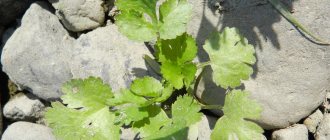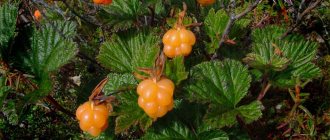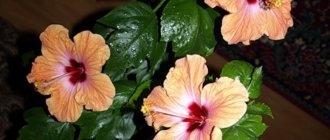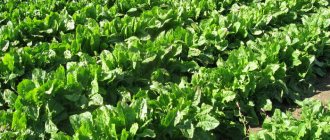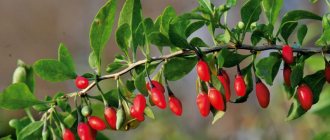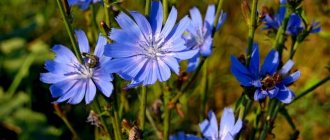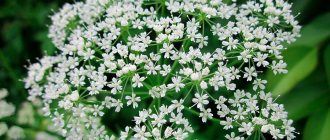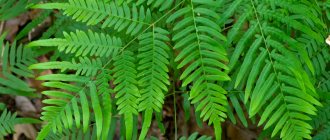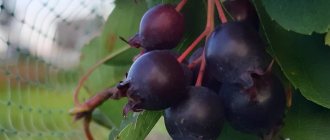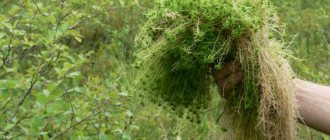Licorice mint, or anise lofant, is a plant that has a strong mint aroma with light notes of anise. It has unique healing properties. The plant comes from North America and is a relative of catnip and lemon balm, but has a more pronounced medicinal effect.
Aniseed lofant is an excellent honey plant; it has a unique pleasant aroma and many beneficial properties.
Description of the plant
Lofant is a herbaceous perennial crop from the Yasotaceae family. Depending on the place of cultivation and characteristics, the plant has many different names: anise hyssop, mint, fennel hyssop.
Anise lofant is a shrub about one and a half meters high. The leaves are shaped like nettles. The anise variety blooms with lilac, blue, and white flowers collected in spikelets. The stems and leaves of the grass contain many useful substances. Decoctions, tinctures, creams and other useful products are prepared from them.
Description, varieties and types of lofant
The plant has more than 20 crops. Since lofant is not a sufficiently studied plant, some species have not been fully described.
The height of the perennial varies from 50 to 150 cm depending on the variety. The culture has a fairly developed root system. Flowers of a medicinal plant can have the following shades:
- blue;
- purple;
- purple;
- white.
The stem of the lofant is erect, and the long leaves are purple-brown in color. They are used as raw materials in the manufacture of useful potions due to their significant essential oil content. The fruits of the grass are represented by brown nuts with seeds characterized by a smooth surface.
Currently, the plant is grown in the following areas:
- North America;
- Canada;
- Japan;
- Ukraine;
- Siberia;
- Moldova;
- Stavropol Territory;
- Astrakhan and Saratov regions.
Lofant wrinkled
The shrub is also called Korean mint. Tibetan polygonum is a perennial. The culture can grow in fairly harsh conditions. The height of the wrinkled lofant bush reaches 1 m.
The oval leaves of the polygonum have denticles along the edges. The inflorescences have a purple hue. The distribution area of Korean mint is Asia. Wrinkled polygonum is found in Japan, Siberia, and Korea. The plant prefers sandy soils.
Tibetan lofant is rich in essential oils and microelements. Products made from medicinal plants are intended for external and internal use. Infusions and decoctions of polygonum have a positive effect on the condition of the skin and hair. Medicines from rugosa lofanthus help with diseases of the nervous system, heart and blood vessels, and digestive organs.
Korean mint goes well with various medicinal herbs, such as burdock, lemon balm and elecampane.
Lofant Frant
The plant is also called fennel grass. Lofant Frant or anise reaches a height of 1.5 m. The herb has a pleasant aroma. The perennial has purple and pink inflorescences.
It is noteworthy that the useful plant is not recognized by official medicine. However, studies have confirmed the basic properties of fennel plant:
- bactericidal;
- antioxidant;
- immunostimulating.
The plant is a source of essential oils, which are represented by 20 compounds. The grass is also rich in tannins, flavonoids, and acids, such as malic, ascorbic, and citric.
Anise lofant is used for the treatment or prevention of pathologies of the respiratory tract, genitourinary system, and digestion.
Fennel plant is a popular plant in cosmetology and folk medicine. Its use helps reduce the severity of VSD and hypertension. The herb helps with insomnia. External use of anise lofant helps eliminate skin pathologies:
- dryness;
- dermatitis;
- fungal infections;
- neurodermatitis.
Decoctions and infusions from medicinal plants fight seborrhea and alopecia. Healing agents are added to bath water to eliminate allergic diathesis in children.
Lofant Mexican
It is a popular crop in gardening. The miniature plant grows up to 80 cm. Lofant is distinguished by pink ears and red inflorescences, which can reach half the length of the entire shoot.
The advantage of the plant is its resistance to drought. The shrub does not need fertilizer and can bloom even on poor soil. The medicinal properties of Mexican mint (lofant or amethyst) allow the variety to be used in folk medicine. However, the plant is used more often for landscaping.
Mexican lofant is not attractive to insects
Lofant Barbera
The origin of the culture is unknown. The plant is distinguished by its rather compact size. The polygonum has a height not exceeding 60 cm. Lofant is found in the northern part of Mexico and the eastern United States. The flowers of the plant have a pronounced orange color. The leaves have a grayish tint. It is noteworthy that the plant can be propagated exclusively by vegetative methods:
- stem cuttings;
- dividing the bush.
Lofant Berbera is not frost resistant
Lofant mountain
The plant is characterized by increased bushiness. The polygonum reaches a height of 90 cm. The diameter of the bush is 45 cm. Its distribution area is Arizona and New Mexico. Mountain lofant has a distinct smell. The crop is usually grown as an annual, as the plant can only survive mild winters. Otherwise, drainage is required. A necessary condition is also dry shelter (for the winter).
The mountain lofant plant is not classified as a frost-resistant variety.
History of the plant
For the first time, Hippocrates mentioned the essential oil of anise lofant. The Romans and Greeks used the plant to improve appetite. It was also used in Ancient China, India, and Kievan Rus, where the plant was used as a seasoning for preparing pickled apples.
Lofant has been credited with many medicinal properties since ancient times. The plant has been widely used medicinally and as food for thousands of years. When used correctly, the polygon does not cause any harm, but, on the contrary, only brings benefits.
Since ancient times, the properties of anise lofant were known to the Indians. They used the plant to treat purulent wounds and other skin diseases, as well as for pathologies of the respiratory system, fever, and diarrhea. In European countries, the plant was grown as a honey plant and as a decorative garden decoration.
Now lofant is used only in folk medicine, and is also grown as an ornamental plant. It is not used in official medicine. Despite this, mint has been recognized as promising for the creation of a variety of drugs with antibacterial, antioxidant, fungicidal, and immunostimulating properties. The pyliotropic property has made the plant indispensable in cosmetology.
Growing
Agricultural technology
I consider North America to be the birthplace of Lafanta. Decorative varieties are used in Japan, Canada, USA, and Europe. In Russia, polygonum grows in the Crimea, in the Moscow region and Siberia, in the Saratov and Astrakhan regions.
When growing agastache in a garden or vegetable garden, choose a well-lit place. The soil fertility can be any (this plant blooms on the poorest soils), but it must be loose (breathable), capable of quickly getting rid of excess moisture. The bed for planting seedlings is dug up in the fall and humus is added.
How to grow seedlings
Seedlings are grown if the polygonum is used as an annual plant. Perennial plants can be propagated vegetatively.
At the beginning of April, containers with substrate for seedlings are prepared. The seeds are scattered over the surface, sprinkled with the same soil, and irrigated with a sprayer. To speed up germination, the containers are covered with film and placed in a warm, well-ventilated room and sprayed regularly. The seedlings dive into separate containers.
If the sprouts are stretched excessively, it is necessary to increase the lighting intensity and add soil to the level of the leaves.
When planting in the ground, the seedlings are removed along with a lump of soil, the distance between the holes is 20-25 cm. Compost is used for mulching.
Agastache seeds are sown in the ground in early May. The furrows are 2 cm deep; water is poured into them before sowing. Dense shoots need to be thinned out. In the first year, polygonum most often does not bloom.
Vegetative propagation
You can use one of two methods: dividing the bushes or rooting cuttings. Mature bushes can be divided both in spring and autumn. They are simply dug up, the root system is divided into several parts with a powerful rhizome and five growing points. Holes are dug and regular watering is required for growth.
Rooting cuttings
In the spring, cuttings are taken from the stems and covered with glass jars for regrowth. The shelter is periodically ventilated, watering is carried out as necessary. Readiness for transplantation is indicated by the appearance of growth buds and new shoots.
Chemical composition
The beneficial properties of anise lofant are determined by its chemical composition. This plant began to be studied only in the 21st century, which is why not all of its composition is yet known. Scientists have discovered tannins, flavonoids, alkaloids, phenolic compounds, as well as ascorbic, caffeic, citric, and malic acids in this plant. The composition includes B vitamins, useful microelements such as iodine, iron, zinc, manganese.
The aerial part contains up to fifteen percent essential oil, which contains methyl chavicop.
What are the benefits of anise hyssop?
In terms of its medicinal properties, anise lofant can compete with strong essential oil herbs. Hyssop oil has broad anti-inflammatory, antifungal, and antibacterial effects. A concentrated decoction can be used as an external remedy for fungal skin diseases. They make baths with it, which disinfect and soothe.
Tinctures have a stimulating effect on the digestive system and normalize metabolism. Hyssop is an active biostimulant and is used as a tonic. Regular use of the herb in food helps improve immunity.
Products prepared from raw materials help fight mental and physical fatigue: fight stress, increase efficiency and endurance of the body. The plant also has valuable properties that help slow down the aging process.
Correct use of anise lofant allows you to remove all toxins, waste and other harmful substances from the body.
Essential oil can reduce the effects of radiation.
Hyssop tincture is good for headaches and insomnia. This plant also has a positive effect on male potency and helps cure prostatitis.
The most valuable thing in anise lofant is its essential oil. To prepare it, use the above-ground part of the plant collected during the flowering period. Raw materials are used in medicine, cooking, and cosmetology.
Planting and caring for lofant in open ground
Lofant is an unpretentious plant that can grow on any type of soil. It will not die on acidic and swampy soil, however, it will bloom sparingly and rarely.
On fertile nutritious soils, lofant will quickly grow and show itself in all its glory. Systematic pruning will stimulate the development of new shoots and ensure a long flowering period over several months.
During the dry season, the plant needs regular watering. For abundant flowering, the polygon needs to be fertilized regularly. To increase the decorative effect, complex mineral fertilizers are used, which are applied 3 times a season, and in the fall they are fed with organic matter (compost or humus).
As the weeds grow, the lofant thickets need to be weeded, since the plant is not capable of displacing more aggressive species. In the fall, many gardeners cut off the above-ground part of the plant, leaving half of the total height of the bush.
How to use
A variety of medicinal products are prepared on the basis of lofant: extracts, tinctures, and decoctions are made. They have a therapeutic and preventive effect on the body, and also prevent the formation of cancer cells.
Quite often, the herb is prescribed for developmental delays and for elderly people. Fresh leaves are used as a seasoning for fish and meat dishes, and added to jams. Crushed seeds are added to baked goods.
In medicine, hyssop is used to treat the following ailments:
- Pneumonia, bronchitis.
- Gastritis, peptic ulcer.
- For digestive disorders.
- For liver pathologies.
- With high blood pressure.
- Hyssop helps with angina pectoris.
- Treats atherosclerosis.
- Helps with headaches.
- ARVI.
- Relieves nervous tension, helps with insomnia, treats nervous tension.
- Prevents aging processes.
- Strengthens the immune system, tones.
- Treats dermatitis, acne, burns.
- Reduces the level of radiation, helps fight the negative impact of the environment on the body.
- Tea with lofant is recommended for children who are stunted.
Contraindications
Lofant anise has contraindications. This plant cannot be used for thrombophlebitis or low blood pressure. It is not recommended to take products obtained from the plant for those who suffer from intolerance to the components contained in the herb.
Lofant is contraindicated during pregnancy and lactation.
Knowing the beneficial properties and contraindications of anise lofant, you can decide whether the plant is suitable for use. But to be completely sure that this herb will have a positive effect on the body, it is recommended to consult a specialist.
Beneficial features
The main medicinal property is that preparations from lofant activate the human immune defense and the functioning of the internal glands, and improve the general condition of the body.
Fact. According to herbalists who understand medicinal herbs, lofant has a lot of healing properties and is even better than ginseng in this regard.
Agastachis-based products also have other healing properties:
- cleanses blood vessels. With the constant use of agastachys-based products, dangerous substances are removed from cells and internal organs are cleansed;
- help recovery after serious illnesses. Medicines from lofant calm the nervous system and help recovery after heart attacks;
- normalize intra-arterial pressure. Infusions are used for disorders of the regulation of vascular tone of the autonomic nervous system, elevated cholesterol levels, high blood pressure;
- reduce inflammatory processes. The components in this plant relieve inflammation and normalize the functioning of the gastrointestinal tract and other internal organs.
- cleanse the skin. Lofant infusions help cleanse the epidermis, eliminate eczema, psoriasis, dermatitis;
- has a calming effect on the nervous system.
Healing infusion
For pathologies of the pancreas, for urolithiasis and cholelithiasis, for VSD, diseases of the pancreas, liver, an infusion is prepared from lofant. For it you will need a spoon of raw material, which is poured with a glass of boiling water, the product is infused for two hours. Then the composition is filtered and taken one hundred grams three times a day. You can add a teaspoon of honey to the infusion. Treatment of the pathology lasts a month, then a two-week break is taken.
Herbal mixture
With severe nervous excitement, menopause, arrhythmia, the following collection helps: lofant leaves and flowers are mixed in equal parts with lemon balm and lemon balm. Then take a spoonful of the mixture and steam it with a glass of boiling water. The product is infused for a couple of hours, fifty grams are taken twice a day before meals. Duration of treatment is a month. Then a week break is taken and the treatment is repeated.
For persistent hypertension, dizziness, tinnitus, atherosclerosis, the following collection is indicated: mix one part of mistletoe and two parts each of hawthorn, yarrow, and lofanthus. Then take a tablespoon of the mixture and pour a glass of boiling water. The product is infused for three hours, filtered and taken a third of a glass three times a day before meals. Duration of treatment is a month. Afterwards, a week-long break is taken, and the course is repeated twice more.
External use
For external use, ointments and decoctions are prepared from lofant. They help cope with skin ailments. Anise hyssop enhances tissue regeneration and has a tonic effect. This plant has unique properties that are widely used in cosmetology. Shampoos that promote active hair growth are made from the plant.
Decoctions are added to baths, which help normalize sleep, promote the healing of purulent wounds, and treat acne. The decoction is used to wipe the face to eliminate wrinkles and give the skin a radiant appearance.
You can apply fresh leaves to wounds. The zinc contained in the composition will disinfect the site of injury, and tannins will reduce pain.
Methods of preparation and use
Traditional medicine offers several proven algorithms for processing anise lofant. Both aqueous and alcoholic preparations can be prepared from the plant.
Tea
Tea made from dried lofant leaves has a good effect on weakened immunity and decreased tone. Prepare the drink according to this recipe:
- dry grass is crushed in the volume of a large spoon;
- pour a glass of boiling water;
- insist for half an hour under the lid.
The finished drink is passed through cheesecloth and consumed between meals throughout the day.
In just one day you can drink no more than three cups of anise lofant
Infusion
A water infusion of anise lofant helps with inflammatory processes in the stomach and intestines, with ailments of the genitourinary system and heart failure. Prepare the product as follows:
- dry leaves of the plant are crushed in the volume of two large spoons;
- pour 500 ml of boiling water;
- keep under the lid for five hours;
- passed through folded gauze.
You need to take the infusion half a glass three times a day on an empty stomach. You can add a little honey to the medicine to improve the taste. Externally, the infusion can be used for wiping for eczema and fungus. The drug is also instilled into the nose for a runny nose and gargled for a sore throat.
Advice! For skin diseases and joint ailments, anise lofant infusion can be added to healing baths.
Taking the anise lofant infusion orally continues for no more than three weeks.
Decoction
A useful decoction of anise lofant helps with insomnia and increased anxiety, indigestion and internal inflammation. It can be used externally for boils and ulcers, as well as for allergic diathesis. Prepare the remedy as follows:
- 50 g of dry plant is poured with 500 ml of water;
- bring to a boil and simmer over low heat for another 15 minutes;
- remove from the stove and keep covered for two hours.
The strained product is taken 150 ml three times a day on an empty stomach.
Anise lofant decoction can be stored in the refrigerator, covered, for no more than five days.
Ointment
Based on the roots and leaves of the medicinal plant, you can prepare a healing ointment. The recipe looks like this:
- the dry plant is crushed in an amount of 100 g;
- mixed with 200 g of Vaseline;
- bring the components to maximum homogeneity;
- Place the product in the refrigerator for several hours.
The thickened ointment is used for skin ailments and joint diseases. A thin layer of the product is distributed over the affected area and covered with a bandage or gauze on top.
Instead of Vaseline, you can use lanolin or butter to prepare the ointment.
Unique plant
Anise lofant, the photo of which is presented in this article, has unique medicinal properties. It can be used by both adults and children. The plant is of particular value to young parents: bathing children with the addition of a decoction helps normalize sleep, calms them down, and relieves stress.
The rich vitamin and mineral composition brings a lot of benefits. It helps get rid of almost all pathologies associated with low immune defense. Raw materials are collected in dry weather after the dew has disappeared. Dry the plant in a well-ventilated area or under a canopy. For storage use fabric bags or glass containers. Raw materials are stored for a year.
Rules for the procurement of lofant raw materials
To prepare medicinal compositions, you need to use the upper part of the stem. Take fresh shoots that appeared during the formation of buds or flowers and cut them with pruning shears 10 cm from the ground. The shoot should not be longer than 22 cm. If the collection occurs twice during the summer, then the second time the shoot is separated, which is 20 cm from the soil.
Branches with spikelets are shaken off, tied in bunches and laid out on a clean sheet to dry.
After they stop releasing moisture, they are hung from the ceiling or placed in a basin. The place should be dark and well ventilated. It is allowed to use the dryer at temperatures up to +40 °C.
The criterion for a properly harvested plant is its bitter taste, fragility, tart smell,
Then the raw materials are crushed and packaged in dense bags. In order for it to be better preserved, it is worth taking an airtight material, for example, thick paper or glass.
It is advisable to use the herb within 12 months. After the expiration date, it will be unusable.
Source
Other useful and medicinal plants

